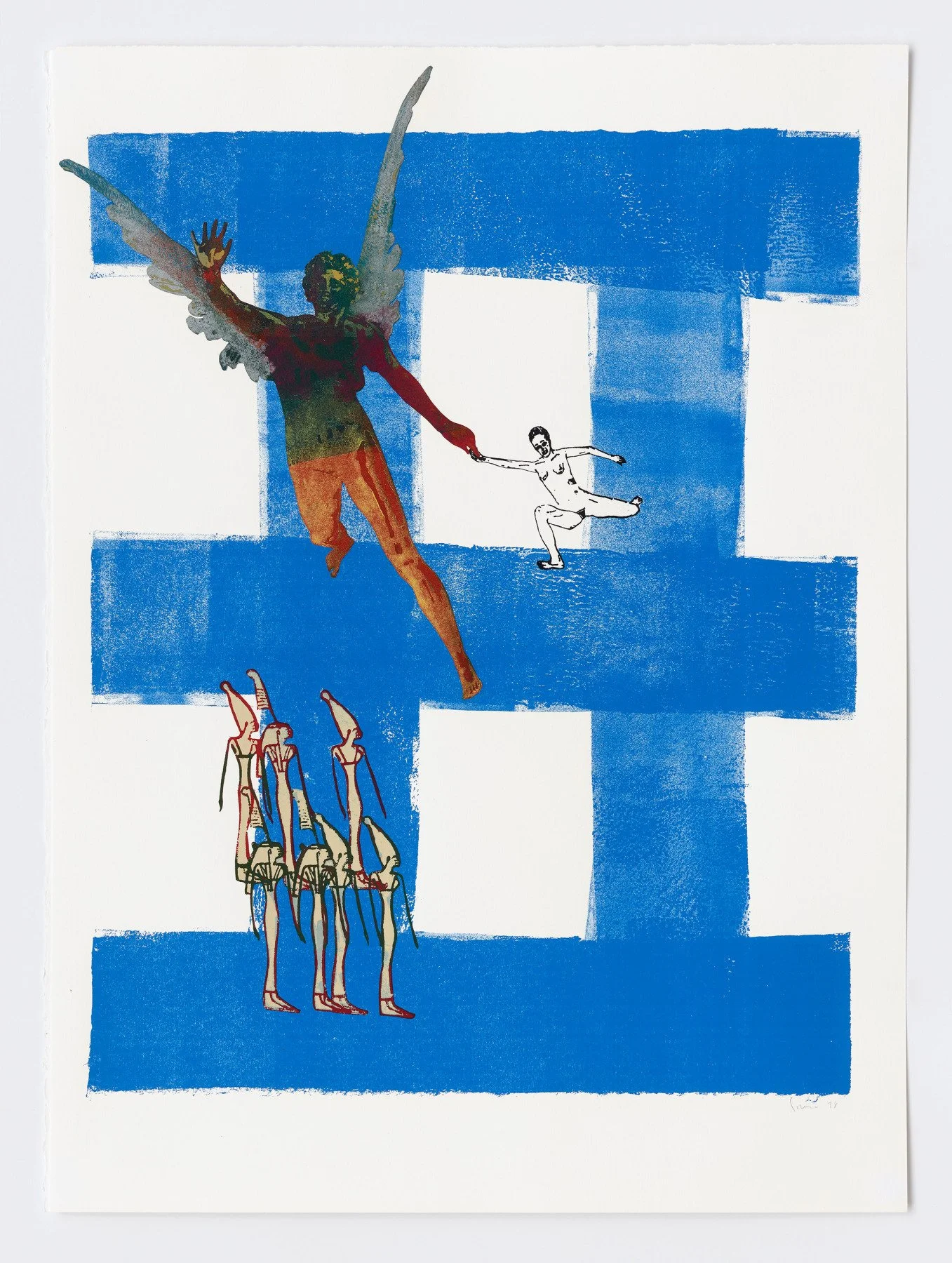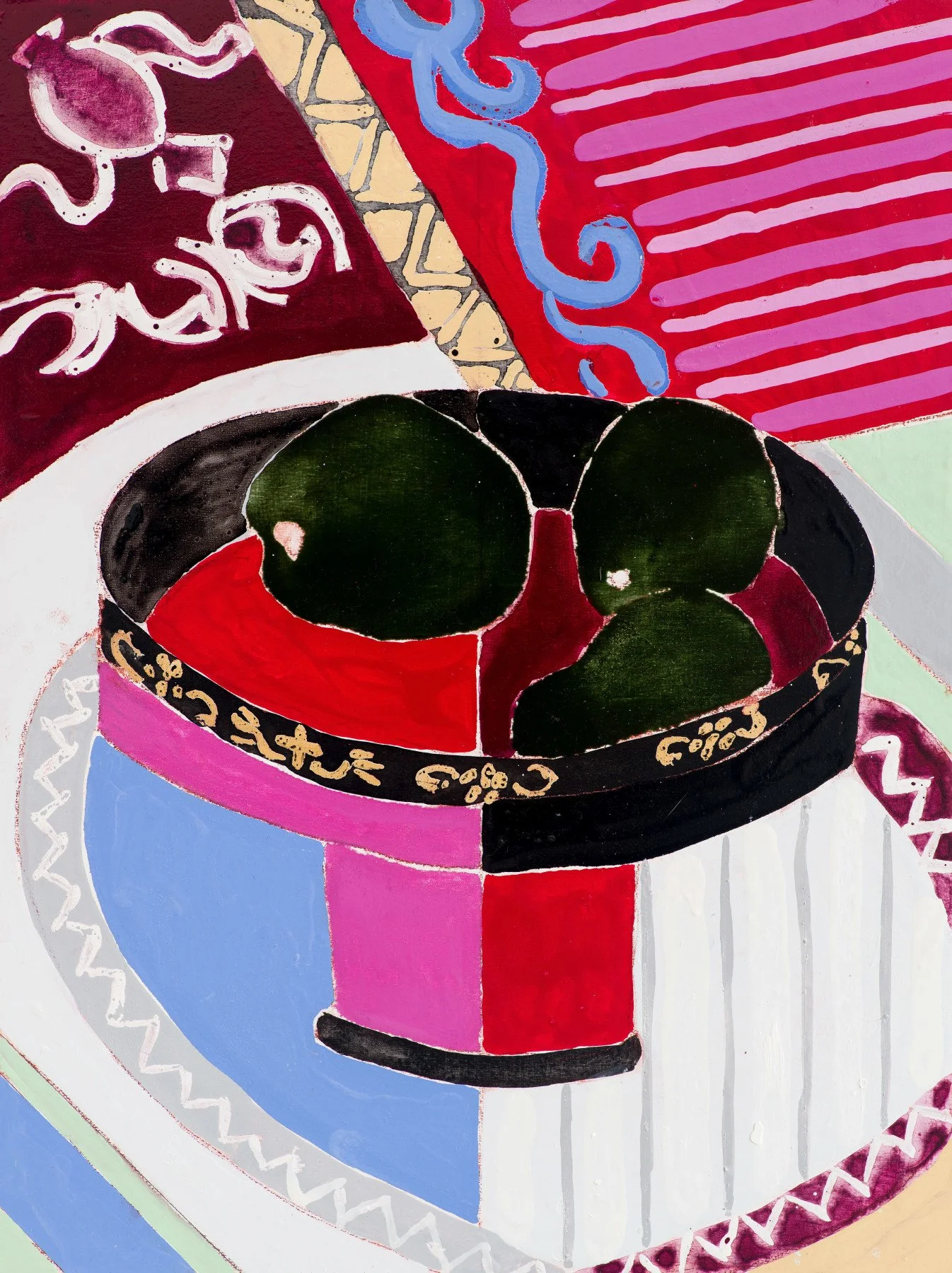Nancy Spero
“Woman as Protagonist”
New York, 528 West 26th Street
Throughout a career spanning over five decades, the New York-based artist Nancy Spero (b. 1926 – d. 2009) foregrounded women’s experiences, challenging systems of authority and subverting aesthetic conventions in the process. Frustrated with the pervasive silencing of women’s voices in society, Spero was an activist who devoted herself to the advancement of women in the arts through hosting and participating in discussion groups, many held in her SoHo loft. Beginning in 1976, Spero made women the sole subject of her work to elevate their status from “other” to protagonist. In celebration of Spero’s unapologetic advocacy for the presence of women in the arts, the exhibition will coincide with Women’s History Month.
Nancy Spero Apparitions, 2000 Handprinting and printed collage on paper 22 ¾ x 28 ¾ x 1 in (57.8 x 73 x 2.5 cm) Framed: 23 x 29 x 1 ½ in (58.4 x 73.7 x 3.8 cm)
A selection of works on paper demonstrative of Spero’s signature styles of collage and printing will be featured. These works are populated by female figures originating from diverse cultures spanning time and space; women with origins in pre-history, classical antiquity, and modernity are seen alongside one another. Nancy Spero began amassing the collection of plates she used to handprint these figures in the 1980s and they swiftly became a core component of her practice. Early examples of these printed works show Spero printing colorful figures directly onto white paper. By the 1990s, Spero’s printing practice had evolved to include bold, colorful backgrounds. Hues ranging from vibrant and bright to dark and muted take on a variety of forms, from multi-colored checkerboards to monochrome strokes, adding a rhythmic quality to the narratives Spero’s “stock company” present. In Spero’s own words, “these collages of handprinted figures are superimposed in fast rhythms to increase the tempo of actions of women in narrative/history.”
In the largest work on paper in the exhibition, Relay (2000), Spero arranges the sweeping narrative in a series of smaller vignettes. Figures appear repeatedly against an ever-changing background; variations in color and pattern alter the viewer’s perspective and create a sense of dimensionality within the work. The size and spatiality of Relay reflect Spero’s unique approach to her signature medium, paper. Spero observed that painting was “too conventional, too establishment” and relished the freedom she found in the ephemeral quality of paper.
The works on paper will be complemented by a sculptural work, Sheela-Na-Gig at Home (2000). This work places the Celtic goddess, who is symbolic of female fertility and is a common figure in Spero’s works, in a distinctly modern context: on a clothing line amongst contemporary women’s undergarments. The conceptual basis of this work first appeared in a 1995 performance in which the artist pins images of Sheela-Na-Gig and various women’s undergarments to a clothesline while remarking “A woman’s work is never done. This is the ancient Celtic goddess Sheela-Na-Gig. I also have to hang my laundry up, too; I don’t have a dryer. Well, I have to do the dishes now.” This performance was accompanied by directives for a recreation of the work, calling upon “women who wish to invigorate the feminine demiurge in the home and to expel male presences” to join Spero in the act of pinning Sheela-Na-Gig’s likeness to a clothesline. The work creates space for a critique of the expectations placed upon women in the domestic sphere and a rebellion against these notions.







